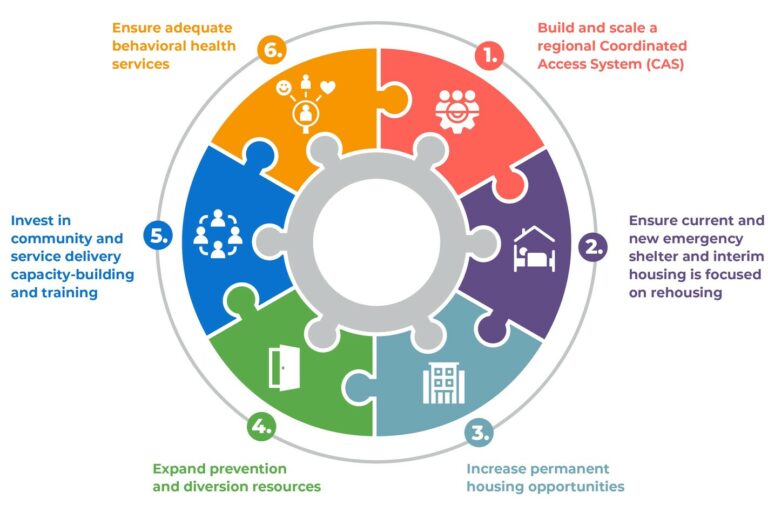This Year One 2023 plan outlines Activities to implement the Local Homeless Action Plan strategies and creates measurable annual outcomes.
The “ALL IN” PowerPoint presentation was delivered at the All In Sacramento event held on April 17th
For additional past reports, please email communications@sacstepsforward.org
The Sacramento Local Homeless Action Plan (LHAP) was initiated in early 2022 to meet the requirement of the Homeless Housing, Assistance, and Prevention Program (HHAP-3) application, but more importantly to create a cross-jurisdictional unified approach to addressing homelessness across Sacramento County. This three-year plan beginning on July 1, 2022 through June 30, 2025 was developed in partnership with SSF, Sacramento City and County Continuum of Care, Sacramento County, City of Sacramento and the Sacramento Housing and Redevelopment Agency.
The LHAP is actionable, relatable, and provides a roadmap for future funding. Outlined in the plan are key system components that align with national best practices and if resourced and implemented consistently across funders and providers, will bring the local response system to scale with capacity to move the needle on homelessness. Through these efforts, homelessness in the County over time will become preventable whenever possible, brief, and non-recurring.
Learn about the collaborative actions of the City, County, SHRA and CoC being taken toward a coordinated implementation of the Sacramento Local Homeless Action Plan (LHAP) and the official City/County Partnership Agreement that will lead to real solutions for our communities.

The LHAP strategies and sub-strategies are based on the recent gaps analysis and needs assessment (Appendix A of the LHAP), The key takeaways from the gaps analysis are as follows:
Implementation of this plan is supported by guiding principles and includes a commitment to racial equity; inclusion of partners with lived expertise; improved data collection; a person-centered, trauma-informed county-wide response system that provides access to immediate and ongoing support service needs (i.e. mental health, substance use, housing retention); and continuation of collaborative planning and decision-making across jurisdictions.
Once adopted by local governing bodies, the plan’s partners will continue to work with the community to develop an annual slate of activities that offer strong action steps toward the advancement of the strategies and sub-strategies and quantify the First Steps milestones. The LHAP will be measured through consistent review of system level performance goals and implementation of action steps.
Sacramento Steps Forward is a private, non-profit 501(c)(3) charity serving the Sacramento region. EIN# 27-4907397